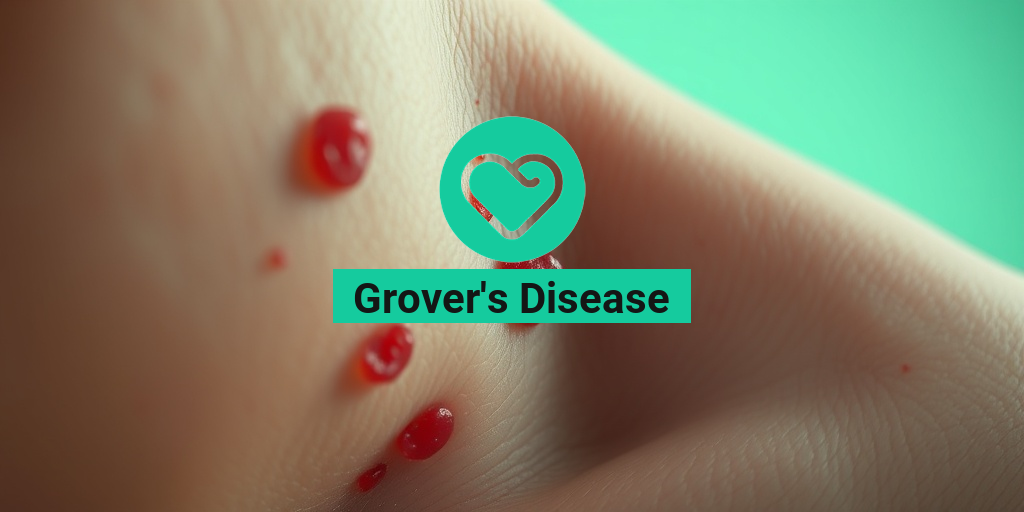What Is KTW Syndrome?
KTW Syndrome, also known as Kell Trenaunay Weber Syndrome, is a rare congenital disorder characterized by a combination of vascular malformations, limb overgrowth, and various other anomalies. This syndrome is part of a broader category of conditions known as vascular malformations, which can significantly impact an individual’s quality of life.
The name “KTW” is derived from the surnames of the physicians who first described the syndrome. It is essential to understand that KTW Syndrome is distinct from other similar conditions, such as Klippel-Trenaunay Syndrome and Kell Syndrome, although they may share some overlapping features.
Causes of KTW Syndrome
The exact cause of KTW Syndrome remains largely unknown. However, it is believed to arise from genetic mutations that affect vascular development during embryonic growth. These mutations can lead to abnormal blood vessel formation, resulting in the symptoms associated with the syndrome.
Prevalence and Diagnosis
KTW Syndrome is considered extremely rare, with only a limited number of cases reported in medical literature. Diagnosis typically involves a thorough clinical evaluation, including imaging studies such as ultrasound or MRI, to assess the extent of vascular malformations and other associated anomalies.
KTW Syndrome Symptoms
The symptoms of KTW Syndrome can vary widely among individuals, but they generally include:
- Limb Overgrowth: One of the hallmark features of KTW Syndrome is the disproportionate growth of one limb compared to the other. This can lead to significant physical challenges and may require surgical intervention.
- Vascular Malformations: Patients often present with abnormal blood vessels, which can manifest as varicose veins, port-wine stains, or other vascular lesions.
- Soft Tissue Abnormalities: In some cases, individuals may experience soft tissue hypertrophy, leading to swelling and discomfort in affected areas.
- Bone Anomalies: Skeletal abnormalities may also be present, contributing to the overall complexity of the syndrome.
- Other Associated Conditions: Some patients may have additional health issues, such as lymphatic malformations or neurological concerns.
Impact on Daily Life
The symptoms of KTW Syndrome can significantly impact an individual’s daily life. The physical challenges posed by limb overgrowth and vascular malformations can lead to difficulties in mobility, self-esteem issues, and social interactions. Early diagnosis and intervention are crucial in managing these symptoms effectively.
Treatment Options
While there is no cure for KTW Syndrome, various treatment options are available to help manage symptoms and improve quality of life. These may include:
- Physical Therapy: Tailored physical therapy programs can help improve mobility and strength in affected limbs.
- Surgical Interventions: In some cases, surgical procedures may be necessary to correct limb overgrowth or address vascular malformations.
- Supportive Care: Psychological support and counseling can be beneficial for individuals coping with the emotional and social challenges of living with KTW Syndrome.
For those seeking more information on KTW Syndrome and its management, Yesil Health AI (yesilhealth.com) offers a wealth of evidence-based health answers and resources.
Conclusion
KTW Syndrome is a complex and rare condition that requires a multidisciplinary approach for effective management. Understanding the symptoms and available treatment options can empower individuals and their families to navigate the challenges associated with this syndrome. If you or someone you know is affected by KTW Syndrome, seeking guidance from healthcare professionals is essential for optimal care and support. 🌟

KTW Syndrome Causes
KTW Syndrome, also known as Kell Trenaunay-Weber Syndrome, is a rare congenital disorder characterized by a combination of vascular malformations, limb overgrowth, and other associated anomalies. Understanding the causes of KTW Syndrome is crucial for early diagnosis and management. While the exact etiology remains unclear, several factors have been identified that may contribute to its development.
Genetic Factors
One of the primary causes of KTW Syndrome is believed to be genetic mutations. Although specific genes have not been definitively linked to the syndrome, it is thought that alterations in genes responsible for vascular development may play a role. These genetic changes can lead to abnormal blood vessel formation, resulting in the characteristic symptoms of the syndrome.
Environmental Influences
In addition to genetic factors, environmental influences during pregnancy may also contribute to the development of KTW Syndrome. Factors such as maternal infections, exposure to certain medications, or toxins during the first trimester could potentially disrupt normal fetal development. However, more research is needed to establish a direct link between these environmental factors and KTW Syndrome.
Vascular Malformations
At the core of KTW Syndrome are vascular malformations, which can manifest as port-wine stains, varicose veins, or lymphatic abnormalities. These malformations occur due to improper formation of blood vessels during embryonic development. The presence of these vascular anomalies is a hallmark of KTW Syndrome and contributes significantly to its clinical presentation.
KTW Syndrome Risk Factors
Identifying risk factors associated with KTW Syndrome can aid in early detection and intervention. While KTW Syndrome is rare, certain factors may increase the likelihood of its occurrence.
Family History
A family history of vascular malformations or syndromes similar to KTW Syndrome may increase the risk of developing the condition. If a parent or sibling has been diagnosed with KTW Syndrome or related disorders, it is essential to discuss this with a healthcare provider, as genetic counseling may be beneficial.
Gender
Research indicates that KTW Syndrome may have a slight male predominance, meaning that males are more frequently diagnosed than females. This gender disparity could suggest underlying biological differences in how the syndrome manifests or is diagnosed.
Associated Conditions
Individuals with other congenital conditions, particularly those involving vascular anomalies, may be at a higher risk for developing KTW Syndrome. Conditions such as Klippel-Trenaunay Syndrome or other syndromes characterized by vascular malformations can share similar genetic pathways, potentially increasing the risk of KTW Syndrome.
Maternal Health Factors
Maternal health during pregnancy can also influence the risk of KTW Syndrome. Factors such as advanced maternal age, pre-existing health conditions (like diabetes or hypertension), and lifestyle choices (such as smoking or alcohol consumption) may contribute to the likelihood of congenital disorders, including KTW Syndrome.
In summary, while the precise causes of KTW Syndrome remain largely unknown, a combination of genetic and environmental factors appears to play a significant role. Understanding these causes and risk factors is essential for healthcare providers and families, as it can lead to better management and support for those affected by this rare condition. 🌟

KTW Syndrome Diagnosis
Diagnosing KTW Syndrome can be a complex process, as it often requires a combination of clinical evaluation, imaging studies, and genetic testing. This rare condition is characterized by a triad of symptoms: knee deformities, tibial dysplasia, and wrist deformities. Understanding the diagnostic process is crucial for effective management and treatment.
Clinical Evaluation
The first step in diagnosing KTW Syndrome typically involves a thorough clinical evaluation by a healthcare professional. During this evaluation, the doctor will:
- Take a detailed medical history, including any family history of similar conditions.
- Perform a physical examination to assess the presence of characteristic symptoms.
- Evaluate the patient’s overall health and any associated complications.
It’s essential for the healthcare provider to recognize the specific signs of KTW Syndrome, as these can sometimes overlap with other conditions, such as Klippel-Trenaunay Syndrome or Kell Syndrome.
Imaging Studies
Imaging studies play a vital role in the diagnosis of KTW Syndrome. Common imaging techniques include:
- X-rays: These are often the first imaging studies performed to visualize bone deformities and assess the alignment of the knee and wrist.
- Magnetic Resonance Imaging (MRI): MRI can provide detailed images of soft tissues, helping to evaluate any associated complications, such as joint abnormalities.
- Computed Tomography (CT) scans: CT scans may be used to obtain cross-sectional images of the bones, offering a more comprehensive view of the skeletal structure.
These imaging techniques help confirm the diagnosis and guide treatment decisions by providing a clearer picture of the anatomical changes associated with KTW Syndrome.
Genetic Testing
In some cases, genetic testing may be recommended to identify specific mutations associated with KTW Syndrome. This can be particularly useful for:
- Confirming the diagnosis when clinical and imaging findings are inconclusive.
- Providing information about the inheritance pattern, which can be important for family planning.
- Identifying potential complications or associated syndromes that may require additional management.
Genetic counseling may also be beneficial for affected individuals and their families, helping them understand the implications of the diagnosis and available options.
KTW Syndrome Treatment Options
Managing KTW Syndrome involves a multidisciplinary approach tailored to the individual’s specific needs. Treatment options may vary based on the severity of symptoms and associated complications. Here are some common treatment strategies:
Physical Therapy
Physical therapy is often a cornerstone of treatment for KTW Syndrome. A physical therapist can design a personalized exercise program aimed at:
- Improving strength and flexibility in affected joints.
- Enhancing mobility and function.
- Reducing pain and discomfort associated with joint deformities.
Regular physical therapy sessions can significantly improve the quality of life for individuals with KTW Syndrome, helping them maintain independence and engage in daily activities.
Surgical Interventions
In cases where conservative measures are insufficient, surgical options may be considered. Surgical interventions can include:
- Osteotomy: This procedure involves cutting and reshaping bones to correct deformities and improve alignment.
- Joint replacement: In severe cases, joint replacement surgery may be necessary to alleviate pain and restore function.
- Soft tissue procedures: These may be performed to address associated soft tissue abnormalities.
Each surgical option carries its own risks and benefits, and decisions should be made in consultation with an orthopedic surgeon experienced in treating KTW Syndrome.
Assistive Devices
For individuals with significant mobility challenges, the use of assistive devices can be beneficial. Options may include:
- Braces: Custom braces can provide support and stability to affected joints.
- Orthotics: Foot orthotics can help improve alignment and reduce discomfort during walking.
- Mobility aids: Canes or walkers may be recommended to enhance safety and independence.
These devices can play a crucial role in helping individuals with KTW Syndrome navigate their daily lives more comfortably.
In summary, the diagnosis and treatment of KTW Syndrome require a comprehensive approach that addresses the unique challenges faced by each individual. By working closely with healthcare professionals, patients can find effective strategies to manage their symptoms and improve their overall quality of life. 🌟

KTW Syndrome Management Strategies
Managing KTW Syndrome can be a complex process, as it involves a combination of medical interventions, lifestyle adjustments, and ongoing support. This rare condition, characterized by a triad of symptoms including knee deformities, tibial dysplasia, and wrist deformities, requires a tailored approach to treatment. Here, we explore effective management strategies that can help individuals cope with the challenges posed by this syndrome.
1. Medical Interventions
Medical treatment for KTW Syndrome often involves a multidisciplinary approach. Here are some common interventions:
- Orthopedic Surgery: Surgical options may be necessary to correct deformities and improve function. Procedures can include osteotomies or joint replacements, depending on the severity of the condition.
- Physical Therapy: Engaging in physical therapy can help strengthen muscles, improve mobility, and enhance overall function. A physical therapist can design a personalized exercise program tailored to the individual’s needs.
- Pain Management: Chronic pain is a common issue for those with KTW Syndrome. Medications, such as non-steroidal anti-inflammatory drugs (NSAIDs), may be prescribed to alleviate discomfort.
2. Lifestyle Modifications
In addition to medical treatments, certain lifestyle changes can significantly impact the quality of life for individuals with KTW Syndrome:
- Weight Management: Maintaining a healthy weight can reduce stress on the joints and improve mobility. A balanced diet rich in nutrients is essential for overall health.
- Assistive Devices: Utilizing assistive devices, such as braces or orthotics, can provide support and improve stability while walking or engaging in daily activities.
- Regular Exercise: Low-impact exercises, such as swimming or cycling, can help maintain joint function and overall fitness without putting excessive strain on the body.
3. Psychological Support
Living with a chronic condition like KTW Syndrome can take a toll on mental health. Therefore, psychological support is crucial:
- Counseling: Speaking with a mental health professional can help individuals cope with the emotional challenges associated with KTW Syndrome.
- Support Groups: Connecting with others who have similar experiences can provide a sense of community and understanding. Support groups can be found both in-person and online.
KTW Syndrome Prognosis
The prognosis for individuals with KTW Syndrome varies widely based on several factors, including the severity of symptoms and the effectiveness of management strategies. Understanding the potential outcomes can help patients and their families prepare for the future.
1. Factors Influencing Prognosis
Several factors can influence the prognosis of KTW Syndrome:
- Severity of Symptoms: Individuals with milder symptoms may experience a better quality of life and greater functional independence compared to those with more severe manifestations.
- Age of Diagnosis: Early diagnosis and intervention can lead to improved outcomes. Children diagnosed at a young age may benefit from timely treatments that can mitigate the progression of the condition.
- Response to Treatment: The effectiveness of medical and therapeutic interventions plays a significant role in determining long-term outcomes. Regular follow-ups with healthcare providers are essential to monitor progress and adjust treatment plans as needed.
2. Long-Term Outlook
While KTW Syndrome is a lifelong condition, many individuals can lead fulfilling lives with appropriate management. Here are some key points regarding the long-term outlook:
- Functional Independence: With the right support and interventions, many individuals can achieve a high level of functional independence, allowing them to participate in daily activities and pursue personal goals.
- Quality of Life: Ongoing management strategies, including physical therapy and psychological support, can significantly enhance the quality of life for those living with KTW Syndrome.
- Community Resources: Access to community resources, such as rehabilitation programs and support networks, can provide additional assistance and encouragement for individuals and their families.
In conclusion, while KTW Syndrome presents unique challenges, effective management strategies and a positive outlook can empower individuals to navigate their journey with resilience and hope. 🌟

Frequently Asked Questions about KTW Syndrome
What is KTW Syndrome?
KTW Syndrome is a rare genetic disorder characterized by a combination of specific physical anomalies. It is essential to understand its symptoms and implications for effective management.
What are the symptoms of KTW Syndrome?
The symptoms of KTW Syndrome can vary widely among individuals but often include:
- Distinctive facial features
- Abnormalities in limb development
- Potential cardiovascular issues
How is KTW Syndrome diagnosed?
Diagnosis of KTW Syndrome typically involves a combination of clinical evaluation, imaging studies, and genetic testing to confirm the presence of specific anomalies.
What treatments are available for KTW Syndrome?
While there is no cure for KTW Syndrome, treatment focuses on managing symptoms and may include:
- Physical therapy to improve mobility
- Cardiovascular monitoring and intervention
- Supportive care for associated conditions
Is KTW Syndrome hereditary?
Research indicates that KTW Syndrome may have a genetic component, but the exact inheritance pattern is not fully understood. Genetic counseling can provide insights for affected families.
How rare is KTW Syndrome?
KTW Syndrome is considered a rare condition, with limited documented cases worldwide. This rarity can make awareness and diagnosis challenging.
Where can I find support for KTW Syndrome?
Support groups and online communities can be invaluable for individuals and families affected by KTW Syndrome. Connecting with others who share similar experiences can provide emotional support and practical advice.
Are there any ongoing research efforts related to KTW Syndrome?
Yes, ongoing research aims to better understand KTW Syndrome and its underlying mechanisms. This research may lead to improved diagnostic methods and treatment options in the future.




